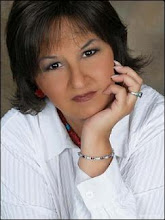Well, I’m 61 and have waited 11 years too long to bite the bullet and get my first colonoscopy (koh-luh-NAH-skuh-pee) done. 50 is the recommended age for the first one and, generally, every ten years thereafter for the purpose of removing colonic polyps before they become cancerous. How often one should really undergo a colonoscopy depends on the abnormalities found at previous colonoscopies.
Individuals with a previous history of polyps or colon cancer and certain individuals with a family history of some types of non-colonic cancers or colonic problems that may be associated with colon cancer (such as ulcerative colitis and colonic polyps) may be advised to have periodic colonoscopies because their risks are greater for polyps or colon cancer.
Also a colonoscopy may be done to investigate the cause of blood in the stool, abdominal pain, diarrhea, a change in bowel habit, or an abnormality found on colonic X-rays or a computerized tomographic (CT) scan. Colonoscopy enables the physician to see inflamed tissue, abnormal growths, ulcers, and bleeding.
What is colonoscopy?
A colonoscopy is a 30-60 minute procedure that allows the physician(usually a gastroenterologist) to examine the inside of the entire large intestine, from the lowest part, the rectum, all the way up through the colon to the lower end of the small intestine.
The colonoscope is a four foot long, flexible tube about the thickness of a finger with a camera and a source of light at its tip. The tip of the colonoscope is inserted into the anus and then is advanced slowly, under visual control, into the rectum and through the colon usually as far as the cecum. The scope transmits an image of the inside of the colon, so the physician can carefully examine the lining of the colon. The scope bends, so the physician can move it around the curves of the colon. The patient may be asked to change position occasionally to help the physician move the scope. The scope also blows air into your colon, which inflates the colon and helps the physician see better.
How does the procedure go?
The patient lies on the left side on the examining table. Some pain medication and a mild sedative is given to keep the patient comfortable and to help with relaxation during the exam. If anything abnormal is seen, like a polyp or inflamed tissue, the physician can remove all or part of it using tiny instruments passed through the scope. That tissue (biopsy) is then sent to a lab for testing.
If there is bleeding in the colon, the physician can pass a laser, heater probe, or electrical probe, or can inject special medicines through the scope and use it to stop the bleeding.
Bleeding and puncture of the colon are possible complications of colonoscopy. However, such complications are uncommon.
The sedative and pain medicine should keep the patient from feeling much discomfort during the exam, but it is necessary to stay 2-3 hours afterwards until that medication wears off. Also, it is necessary to be driven to and from the procedure.
What bowel preparation is needed for colonoscopy?
If the procedure is to be complete and accurate, the colon must be completely cleaned, and there are several colonoscopy preparations. Patients are given detailed instructions about the cleansing preparation. In my case, the doctor's nurse showed an explanatory video one evening for all who were about to have the procedure done. She explained in detail afterwards all that had to be done and why.
The colon must be completely empty for the colonoscopy to be thorough and safe. To prepare for the procedure, the patient should follow a liquid diet for 1 to 3 days beforehand. A liquid diet means fat-free bouillon or broth, strained fruit juice, water, plain coffee, plain tea, or diet soda. Gelatin or popsicles in any color but red may also be eaten. Red dye of any sort may appear like blood during the test.
The patient must also take one of several types of laxatives before the procedure. In general, this consists of drinking a large volume of a special cleansing solution or several days of laxatives or enemas prior to the examination. These instructions should be followed exactly as prescribed or the procedure may be unsatisfactory, and may have to be repeated, or a less accurate alternative test may be performed in its place.
I have the procedure in a couple of weeks. I'm not looking forward to the liquid diet or the preparation process for cleansing the colon, or the scope for that matter. Clearly, I don't want to do this. I know I'm not afraid. Good heavens, I gave birth naturally to two babies over nine pounds. It just all seems so yukky.
But intellectually, I know it's necessary, so onward. I'll let you know if the yuk factor turns out to be such a big deal.
Saturday, October 8, 2011
Subscribe to:
Post Comments (Atom)


No comments:
Post a Comment